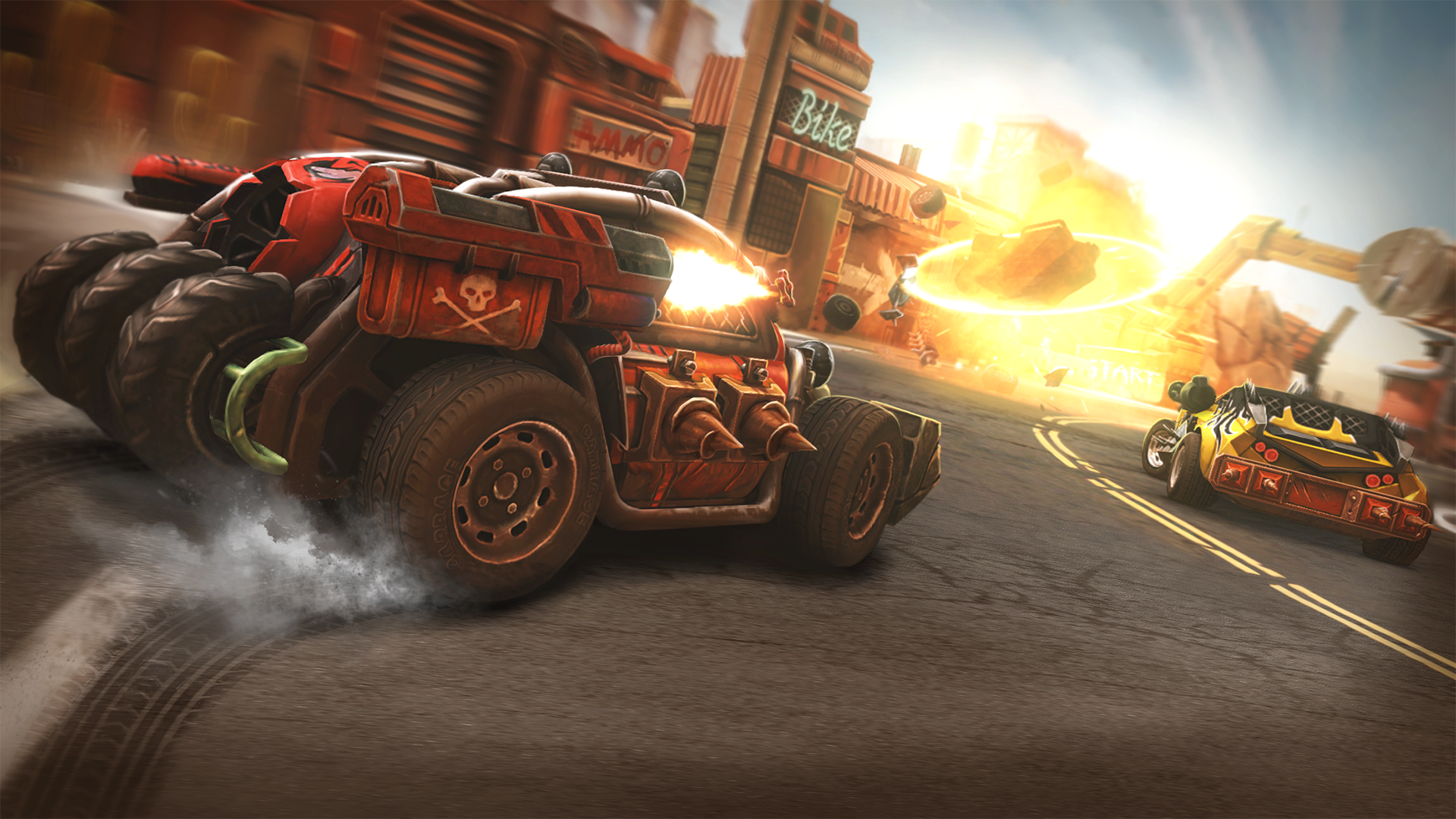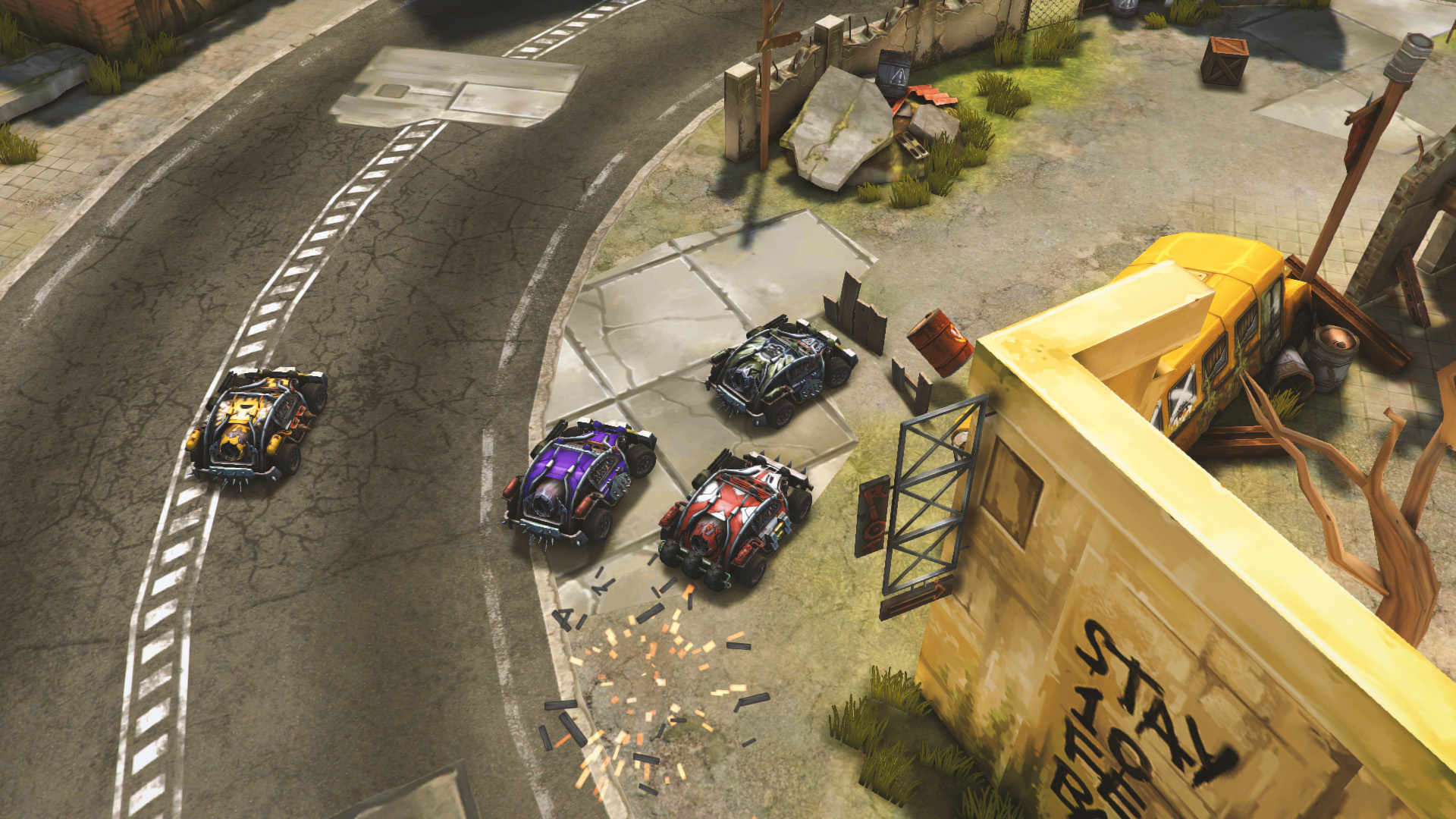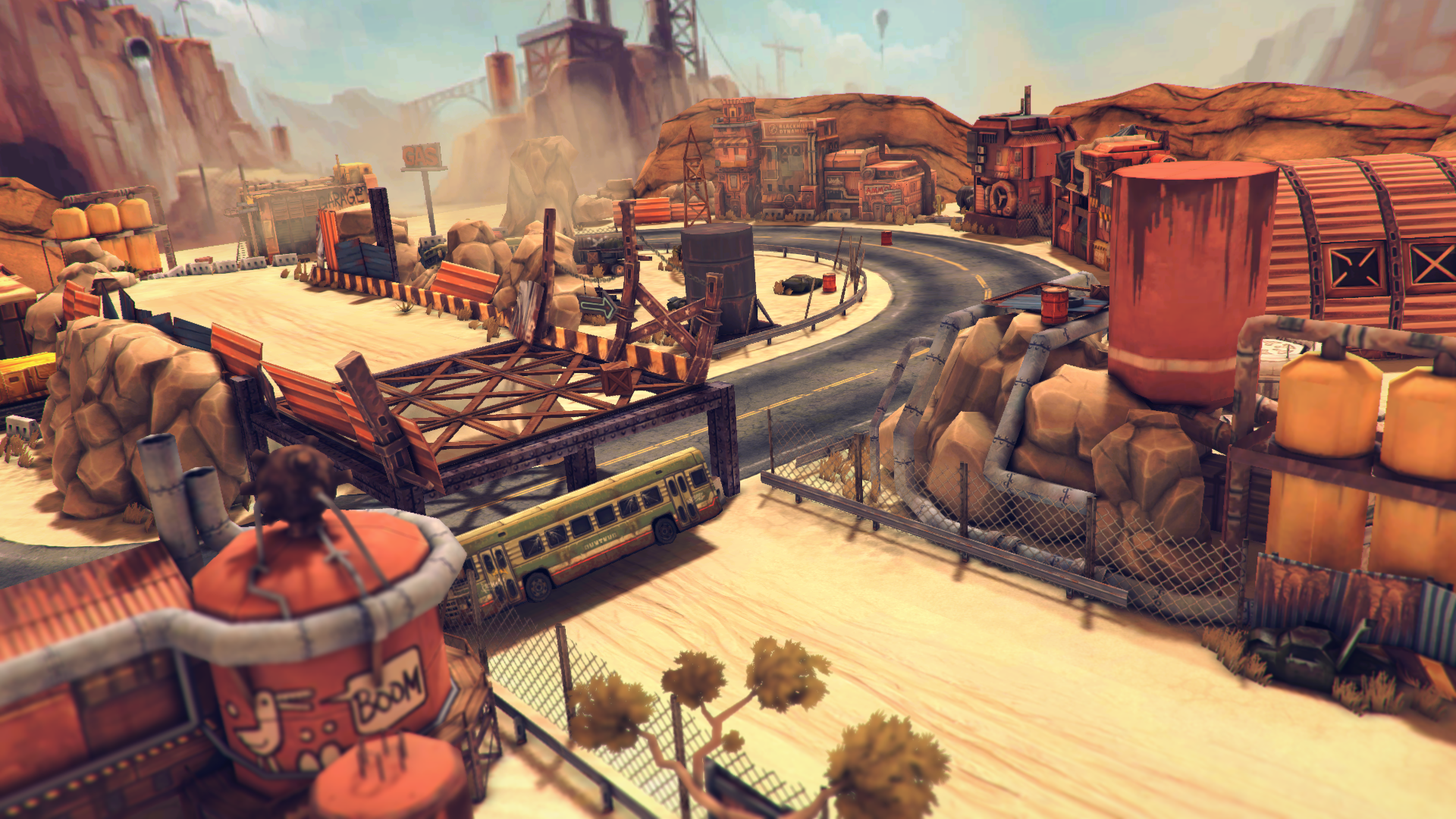About the genre of arcade racing, the transition from outsourcing to in-house development, the balance of multiplayer and optimization during development on Unity 4.6 – we talked with Roman Semenov, CEO of Velcro Games studio, which recently released the game saRRage.
Hi! Arcade about shooting cars – how big a niche is it today?
Hi! How big is a question more for marketers. There are similar products on the mobile market, but we have always disliked something about them, and those that we liked have been passed along and across. There’s even a joke inside the team that we started making the game because we didn’t have anything to play.
The success of Death Rally and Mini Motor Racing (not about shooting, but definitely about cars) shows that this genre has an audience, but similar games have not been released for a long time.
Why am I asking: saRRage is the ideological heir of Rock’n’roll Racing and Death Rally, which acquired a cult status, but never got a sequel. Is it a curse, or is it just not the genre that millions are making on?
The cult status of these games stretches back to the 90s, and as you know, it is difficult to compete with the cult status even for the authors of the original source. Rock’n’roll Racing, by the way, had a sequel, but it was done by completely different people, and something went wrong with them, unfortunately. But Death Rally, judging by the reports of Remedy, quite brought millions to itself, although this is not surprising – a remake of a popular series and from a well-known developer.
Why didn’t they release a sequel? One can only guess about this, but Remedy has been engaged in its console exclusive Quantum Break for several years, and most likely, they just “rested” by releasing Death Rally after a long development of Alan Wake.
By the way, correct me if I’m wrong, but it always seemed to me that such games (like, for example, the ideologically close Interstate ’76) are always a bit about the post-apocalypse? By the way, this is definitely true in relation to CaRRage. How did you choose the setting for the game?
I agree. It seems to me that this setting allows you to create crazy things, like safe doors on hoods and mattresses with chainsaws on the roofs of cars, which fits perfectly into the context of what is happening. Otherwise, it will turn out “Fast and Furious 37”, a family of auto mechanics and expensive sports cars. And since there are no authorities, no one is interested in anything except resources – they found a manhole in a landfill, tied barbed wire to the radiator and went to carry everyone around. We will leave out the fact that a car with such a “tuning” does not move very well, but we still make games and can afford some assumptions.
When a particular game comes out, I can’t help but ask the developers why it is. So, why CaRRage?
We originally wanted to make a game that you can play with live players and get an emotional return instantly, so that there is a competitive element and all these “oh, you ….!”, “azazaza, easy!” and other exclamations.
It is clear that it had to be some kind of action.
Before starting our own development, we were engaged in graphic outsourcing of 2D and 3D graphics, animation, and so on. The next logical step for us was to develop the project on our own, but since we had never had to work with 3D games “from the inside” before, we started with simple prototypes. To tell the truth, caRRage started with a peaceful lawn and 4 pets that had to push each other from this lawn.
Then the pets were replaced by snowmen, but the snowmen were already on cars that rolled aimlessly through the ravines and pleased us with the fact that they were moving at all. And somehow, in the process of discussing what to do with all this splendor, the idea came up to add situational shooting, not permanent, as in Death Rally, but more like Rock’n’ROLL Racing.
Then there were prototypes, reviews from friends and acquaintances of developers, after which we were convinced – we need to continue to develop this idea and these mechanics. So caRRage, we can say, turned out by itself.
Were there any alternatives? And how difficult it was to do your first midcore/hardcore project. Before that, you were engaged in casual games, right?
Yes, it was mostly casual games. Before founding Velcro Games, all team members somehow had a hand in various casual projects – farms, runners, three-in-a-row and simple arcades. The alternative was to continue outsourcing, to continue polishing these skills, but gradually it began to turn into a routine, and I wanted to work with new technologies and new genres. In outsourcing, this did not shine for us, so the solution was obvious – to accumulate a certain starting amount of money and do prototypes, first of all, in order to study these new technologies, and then do your own projects.
It was difficult, even very difficult. New pipelines, new job requirements, constant barriers due to lack of information and specific skills. Many things were done by the “poke” method, which ate up a lot of time and nerves. But gradually the processes got better, and the experience gained from mistakes began to work for us. In this case, we are an example of the fact that if you beat your head against the wall for a long time, then your head will ache and start thinking anyway.
How long was it done and what composition?
We started prototyping in February 2014, at the same time we participated in GamesJam. In fact, the development has been going on for almost a year. We went to DevGAMM, presented the game, found an investor and publisher, and started full-fledged development. The main team consists of 8 people, plus freelancers for specific tasks.
What was developed on?
On Unity 4.6. We are planning to migrate to Unity 5, but for now we are exploring new features of this version.
The project looks great and at the same time shows a good fps, how was it optimized?
Thank you, it’s nice to hear that long hours of work bring results. Optimization is a topic for a separate conversation – too many things have to be taken into account and somewhere frankly cunning. At least once a month we stopped adding new features, profiled the project and thoughtfully searched for bottlenecks.
From the point of view of graphics, we tried to minimize the number of textures and polygons, focusing on silhouettes and characteristic details of objects in the game. Well, it was necessary to check the shaders for the correct rendering of objects so that the engine would not draw the same element several times in a row, increasing the rendering time. The lighting in the game is baked lighting maps (Lightmaps). Since most of the objects in the environment are static, this is a great way to improve the overall picture and get rid of the miscalculation of real light sources.
There is multiplayer, but at the same time the game is shareware, hence the question – do you have pay-to-win monetization? Or is it still possible to win the game on skills, despite the investments?
Definitely not pay-to-win. We love games and love to play games, and such techniques, in our opinion, discourage the desire to play – especially with live players. We tried to set up all the basic mechanics of the game so that a player with skills could compete equally with a player who accelerated his pumping with in-game purchases. Due to the knowledge of the route, due to the correct use of weapons, or due to more skillful control of the car. And victory over a superior opponent is always joyful emotions, which is our goal.
How are you balancing, by the way?
Playtests and only playtests. Friends, acquaintances, acquaintances of acquaintances – everyone who has time to play and evaluate what they saw. The guys from Playtestix helped us a lot, we ordered 2 playtests from them and identified both problems and good moments that could be developed further. In the end, of course, the main decisions on balance were made within the team, according to our own feelings, but with an eye to the feedback we received.
Once touched on multiplayer: you have it, but local – via wi-fi. What prevented you from making a full-fledged one?
Everything is very prosaic – lack of finances, time and resources. Full-fledged online multiplayer is one of the main features that we would like to add, but how quickly we can do it will depend on the success of the current version of the game. I can say for sure that work is underway in this direction, and we ourselves can’t wait to see how the players will interact with each other.
The game lacks sociality. You can only share the project via FB or Twitter. What is the reason for this decision?
Mostly with the lack of online multiplayer. That’s where we plan to focus on sociality.
No offense, but by default the game has uncomfortable controls (steering wheel). Perhaps this is a subjective opinion, but are you not afraid that this will lead to a collapse at the first stage (not everyone will guess to go to the settings and change to the arrows)?
No hard feelings. Management on mobile devices in action games is a sore subject for all developers, it seems to us. The playtests showed mixed results, some respondents immediately liked the management and did not cause any complaints, and some had to get used to it, but in the end they got used to it, or chose a more suitable option from the available ones.
The control options are a consequence of the game mechanics and the physical behavior of the machine: it adds the same skill element to the game. In addition, the control was designed with the expectation of both touch devices and a physical gamepad (the game is planned to be released on consoles and PCs), which we plan to add support for in the near future.
A collapse at the first stage is possible, and these are the problems of the tutorial, which will definitely improve.
How much have you invested in the development (and, if it’s not a secret, what sources of funding)?
Let’s put it this way – the prototype was made on its own savings, but the full-fledged development was already carried out with the help of our investor and publisher Nova Games. We cannot disclose the amounts – NDA.
How was the publisher chosen, why Nova Games?
We were looking not only for a publisher, but also for an investor who was ready to take up a midcore game. Among these were Kongregate and Nova Games, which we met on DevGAMM. They liked the game, they made a quick decision, and we started working.
How is your work with the publisher structured? Who is responsible for what?
Development is entirely within the team. At later stages, testing began, playtests were conducted, external balance examination, localization, trailer creation, promotional campaigns and advertising – all this is done by our publisher Nova Games.
The project has just been released, but there are probably already the first results! Can you tell me about them?
The game is gaining popularity and on the third day entered the top 10 applications of the Russian App Store.
Thanks for the interview!
You can download the iOS version of the game here.





